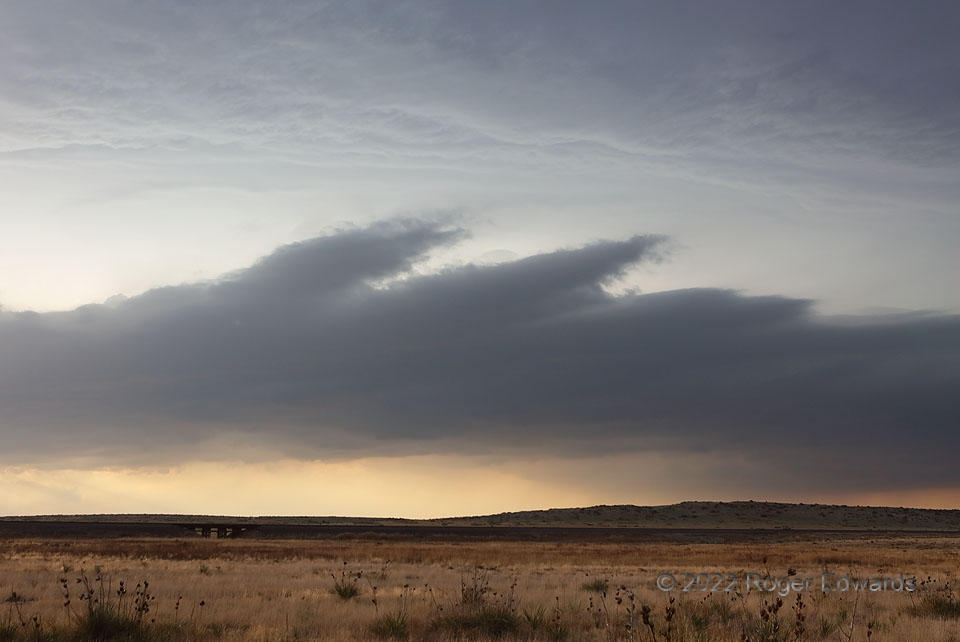One may be forgiven for mistaking the lower cloud base for that of a thunderstorm, if not for the detachment of the feature from the second deck above, which really was a storm base (with unseen deep towers aloft). This bizarre and transient formation developed beneath a swath of rapidly growing elevated convection that soon would become surface-based , as its updrafts accessed a diurnally heated and destabilized boundary layer from which its genesis inflow parcels had been segregated. Horizontal manifestations can be seen of K-H waves that lifted enough air to create shallow, domed, still mostly laminar towers on top (visible at middle center and far right middle). A cloud formation like this is mostly stratiform, partly convective, and defines readily classification. It also was very short-lived. As the boundary-layer door opened into the updraft, this entire miles-long feature vanished in both rain and inflow in under a minute.
11 N Boise City OK (7 Jun 22) Looking NW
36.8825, -102.5175
